About Us
Some Thoughts of SFA
SFA Teaching Philosophy
Founder
English Research Articles
Spanish Research Articles
Back to topHablamos español
Se habla español
Oprime uno para español
Press two for Spanish
By number of native speakers, Spanish is the second most spoken language in the world with over 500 million speakers
Spanish is the second language of the united states with over 50 million hispanics, or 17% of the population
Spanish is one of the official languages of the United Nations
Spanish is the official language of 21 nations, and the second language of Belize, the Philippines, Gibraltar, Andorra, and others
Spanish is the preferred second language of study in the U.S. and many other nations
Spanish is the most common first language in the Americas, and one of the eight modern languages on the Georgia Guidestones.
Judeo-Spanish (Ladino or Sephardic) is also spoken in many parts of the Sephardic Jewish communities throughout the world
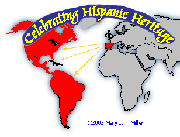
Some Thoughts of SFA
SPANISH FOR ALL is fully dedicated to discover, share, value and inform on relevant cultural issues related to the Hispanic world such as:
- Which heritage term best describes us: Hispanic or Latino? Or are both terms misleading? Since when did heritage become a race?
- What is The Cosmic Race (La Raza Cósmica)?
- How many Spanish speaking countries are there?
- Can you name the African Spanish speaking country?
- Can you name the 5 Hispanic Caribbean countries?
- How many nations form the Organization of American States?
- Which language is spoken the most in South America?
- Which is the biggest minority group within the United States? How many?
- Internationally, September 15th through October 15th has been designated as Hispanic Heritage Month. Any ideas why?
- What do Hispanics call Columbus Day (October 12th)? There are at least 4 names for this date, and El día de Colón is not one of them.
- How many Spanish speaking people have won the Nobel Prize? Do we include Hispanics who reside in non-Hispanic countries?
- What do the following terms mean: Spanish, Castilian, Hispanic, Latin, Latino, Chicano, Boricua, and Iberian?
- Which Hispanic country are all USA citizens?
- In 1848, Mexico lost more than half of its territory to the United States in the Mexican American War. Can you name the 8 States of the U.S. that were part of Mexico?
- What are the 4 languages of Spain?
- How many of the 12 Romance (Latinate) Languages can you name?
- How did ‘America’ the Continent, or New World, become short for the U.S.A.?
- Is ‘America (América)’ a false cognate?
- Spanish is the second most spoken language in the world. About how many native Spanish speakers are there?
- Is there thought without language? Is there culture without language?
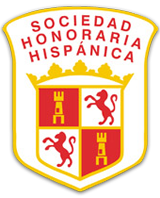
SFA Teaching Philosophy
SFA supports a humanistic, eclectic, progressive approach and uses what works from the various methods of the profession. In doing so, SFA can reach a variety of learning styles and strategies among students. SFA makes learning Spanish individualized, informal, and uses authentic Spanish expressions of everyday living. The strategies and activities are functional and communicative, as to prepare the learner to communicate in a Spanish-speaking setting. See Marc L. Nash Complete Teaching Philosophy
Back to topFOUNDER
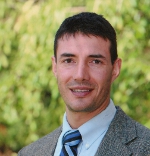
Marc L. Nash (native Spanish-speaker from Bogota, Colombia) various international experiences in education over the last 25 years have aptly prepared and enriched him to eventually establish SPANISH FOR ALL (SFA) (chronologically):
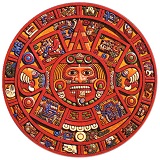
- Saline Area High School (MI: Diploma)
- Eastern Michigan University (B.A. in Spanish and English)
- La Universidad Autónoma de Querétaro (Mexico: Spanish Diploma)
- Colegio Hacienda los Alcaparros (Bogota: First Grade Director)
- Bi-Cultural Limitada (Bogota: Corporate English)
- Ann Arbor Public Schools (Student teacher and teacher)
- Western International High School (Bilingual field study and Code Switching)
- Wayne State University (M.A. in Spanish literature and linguistics)
- Wayne State University (Adjunct faculty: Spanish)
- Herlong Cathedral School (Detroit: K-8th grade Spanish)
- Roxbury Preparatory Charter School (Boston: middle school Spanish)
- Boston and Brookline Adult Education (Spanish electives)
- Buckingham Browne & Nichols School (Cambridge, MA: high school Spanish)
- The Harvey School (Katonah, NY: high school Spanish)
- Ethical Cultural Fieldston School (NYC: high school Spanish for natives and literature)
- Mother Cabrini High School (NYC: high school Spanish for natives and literature)
- Lawrence Woodmere Academy (NY: high school Spanish, Multicultural advisor)
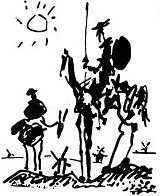
And for the last ten years, Mr. Nash had the pleasure of teaching Spanish at all levels at some premier college preparatory schools, where he had the additional pleasure of spearheading and promoting numerous multicultural celebrations and assemblies for the entire school body.
Marc also has taken two university courses in modern language instruction and has supervised and taught a theory-method course using Alice Omaggio’s Teaching Language in Context as a text guide. As an instructor, Marc has focused his attention in the area of alternative assessments, and text book evaluation, using the latest trends in modern language theory and methodology. In his teaching and research on second language learning and acquisition, Mr. Nash leans towards the Communicative Language Teaching in Context (Natural Approach) methodology, enforced with progressive teaching principles. However, he recognizes that to be set in “one true way” can be futile and frustrating; the language teacher has to take what works from the various methodologies of the profession - Whatever it takes!
English Research Articles
by Marc L. Nash (To view an article click on its name)
- Empiricists and Rationalists Influence on Methodology
- The Input Hypothesis
- Multicultural Education
- Prescriptive Grammar Versus Descriptive Grammar
- Spanish Phonology (Pronunciation)
- Bicultural and Bilingual: Spanish for Native Speakers
- A Bilingual Study (False Cognates)
- Educational Philosophy
- Why Did I Come Back?
- Interview: Hispanic or Latino?
Spanish Research Articles
by Marc L. Nash (To view an article click on its name)
- La dualidad de Garcilaso Inca de la Vega
- La Inquisición
- La violencia colombiana
- Las apariencias animalescas en Miau de Galdós
- Breve historia del español
- Mi regreso ~ Bogotá 1995
- El túnel de Ernesto Sábato
- Hernán Cortés
- Español para hispanos en SFA Bilingual Bicultural
- Filosofía pedagógica
- Decadencia del hombre moderno en Sin rumbo de Cambaceres
- Orígenes de la leyenda negra: estereotipos antihispanos
- El feminismo de Sor Juana Inés de la Cruz
- Dialectos ~ Medellín y Sevilla
Professional preparation and honors received (available upon request)
Back to top





